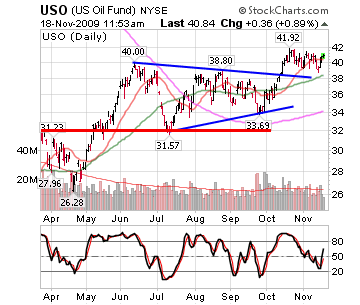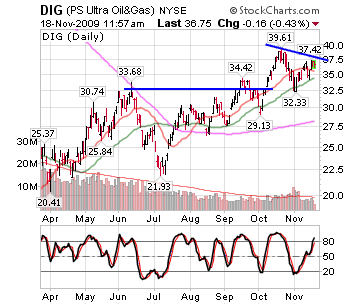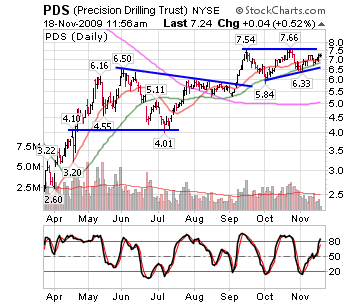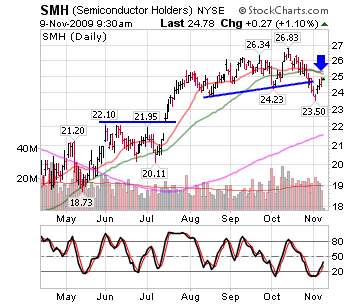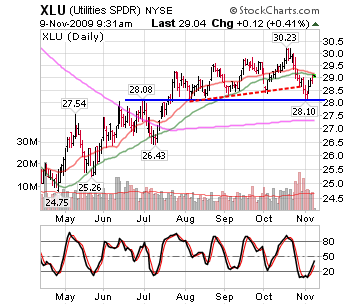Observing the S&P 500 chart, represented by the S&P 500 SPDRS (NYSE:SPY) ETF, the 111.30 level acted as a strong resistance level. This resistance coupled with other technical conditions of the S&P, suggest a larger correction is imminent. Currently, the S&P is trading within a well established uptrend and there will be short term upward pressures until the S&P ETF closes below the support of the ascending trendline near the 106 level, or the S&P index closes below 1,065.
The iShares Russell 2000 Index (NYSE:IWM) ETF continues to show negative signs. IWM recently established a short term downtrend, and has not had enough strength to break above its October higher like its larger-cap counterparts. Many traders will watch for the index to find support at its mid to long-term moving averages. There is not any good support levels between the current level and the significant moving averages, which are currently near $50-55. This chart suggests a larger pullback, and a test of major support levels.
The Powershares QQQ ETF (Nasdaq:QQQQ) was hit hard in the second half of the week. The lackluster earnings report from Dell Inc. (NYSE:DELL) didn't help the case for a move higher. However, the diverging moving averages shown on the chart are a clear indication that the long-term uptrend in technology stocks is still intact.
The Dow Jones Industrial Average(^DJI) has not had any real direction this past week and has been in the choppy, range-bound motion that we had suggested would occur this week due to low volume, economic data, and significant technical chart levels. The chart below shows the DOW has recently touched it's upper trendline resistance (blue line) suggesting now a test of it's lower support level. Also, the pattern that is shown on the chart below is technically called an "inclining wedge" and is generally bearish.
Short-term support for the DOW comes in at 10,050 (UPPER CIRCLE) which is the lower trendline of the wedge (blue) and is also where the 20-day moving average (upper red, wavy line) lies. A break below this 10,050 level should lead the markets to a larger, medium-term correction, near the 9,000 level (LOWER CIRCLE). This 9,000 level is the current area for the 200-day moving average, 38% fibonacci retracement, and June resistance now turned support.
The action this past week clearly shows that the strength of the market rally continue to be in question and seems to be diminishing, paving the way for a downward breakout. The late-week pullback has caused many to wonder if the rally is running out of steam and if a larger correction is nearby, or if this is a brief period of consolidation before another leg higher.
We suggest that you be very cautious with your investments at these current market levels, either take some profits and allocate more of your assets into fixed income, or hedge some of your investments. We still maintain our short-medium term bearishness and outlook for a medium term 10-15% drop in the DOW, and very similar in the other major indices.









